How To Caych A Trophy Brown Trout
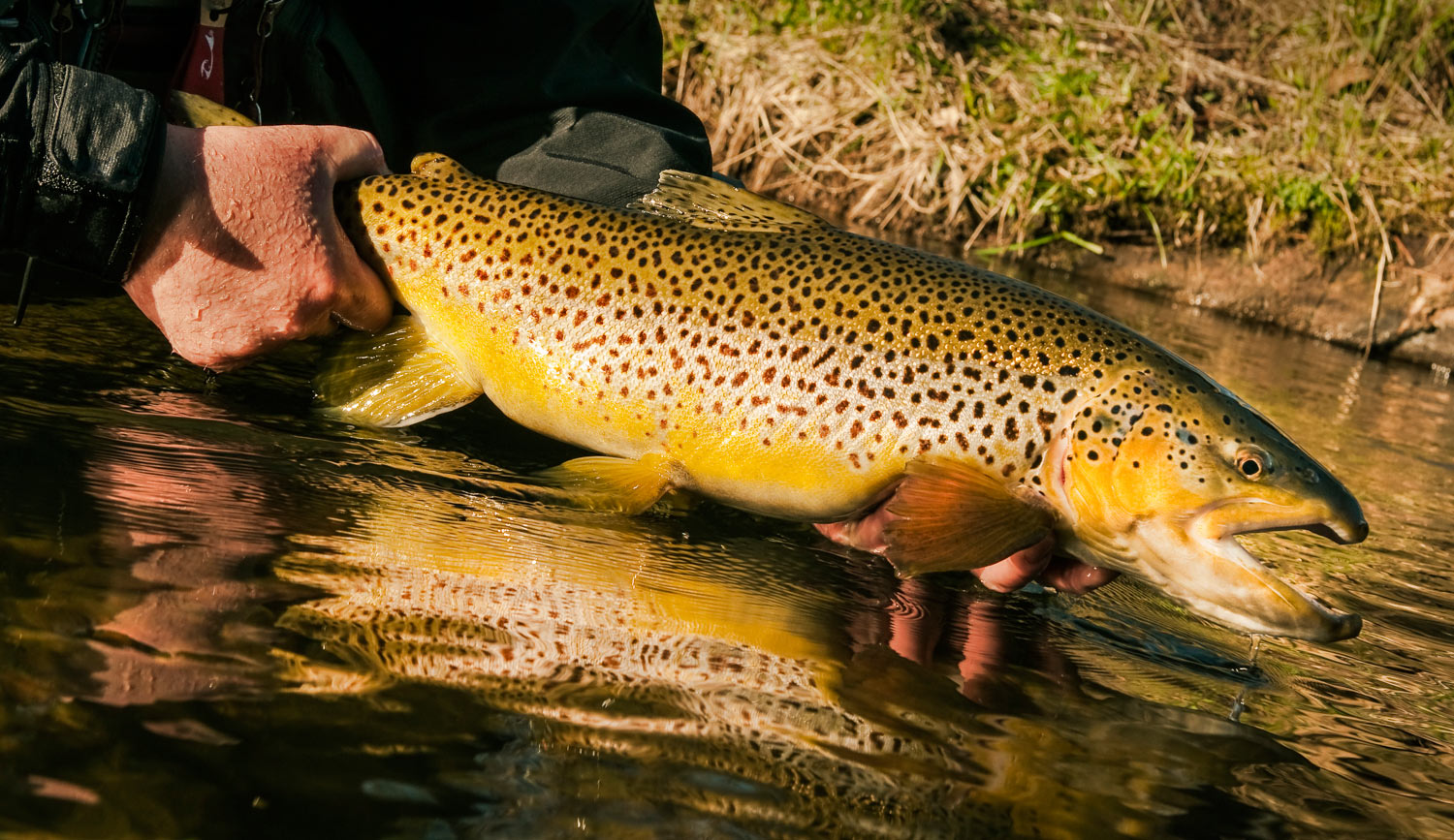
by Jason Tucker
I’ll never forget my first brown trout over 20 inches.
It was about 1:30 am after a very long float down a tiny stream. It had been a slow night with only a couple half-hearted tugs on our mouse imitations. We got down to one of the last holes with a feeding run above it and parked the boat. On my first cast the water erupted with a loud take but the fish missed. I placed my next cast where the fish had hit, made a couple of strips and let it coast. The strike was unmistakable, and I waited that extra half beat until I felt the fish before setting the hook. After a vigorous fight on my 5 weight we slid a 21-inch hook-jawed male into the net, took a couple of quick pics and let him go. It was a magical moment to be sure.
Since then I’ve caught several dozen fish over 20 inches, my biggest being over 28 inches long and about ten pounds. I’ve caught them at night and during the day by a variety of methods. That first 20+ inch fish was like flipping a switch for me. Which is why I’m surprised how often I still hear even experienced anglers express that they would love to catch a brown over 20 inches. Here’s a few tips to make that dream a reality.
KNOW THY TROUT
Brown trout have the potential to get big– really big. The world record is over forty pounds, and in lakes and reservoirs they commonly average ten to twenty pounds. In good water the only limiting factors are mortality and food abundance. River environments tend to limit brown trout growth more than lakes, but most streams will still hold good numbers of browns over twenty inches.
While young trout mostly feed on insects and larvae (think mayflies and nymphs) as they reach that magical twenty-inch mark, insects no longer serve to curb the appetite. At this point they become largely piscivorous, or fish eaters, according to researchers. While this is true, brown trout make the most of any opportunity, and this includes seasonal abundance brought about by the larger fly hatches. In midsummer they shift their diets to include mice and frogs eaten at night.
Another factor to consider is the changed social/dominance status that increasing size lends to them. Small trout have to fend for themselves as best they can, while large trout will always take up the best, most secure lies in a system, and defend them from other fish. This is often deep under a cut bank, or at the bottom of a log jam in a deep hole. As they grow larger they also prefer to feed after dark as long as available food sources permit this. You end up with a situation where smaller fish are forced to feed during the day and in positions easily fished to, while the largest fish feed only at night or in spots impossible to reach.
Don’t despair. Under the right circumstances those big fish will come out and feed. A prime example is
Read More »Wood is Good
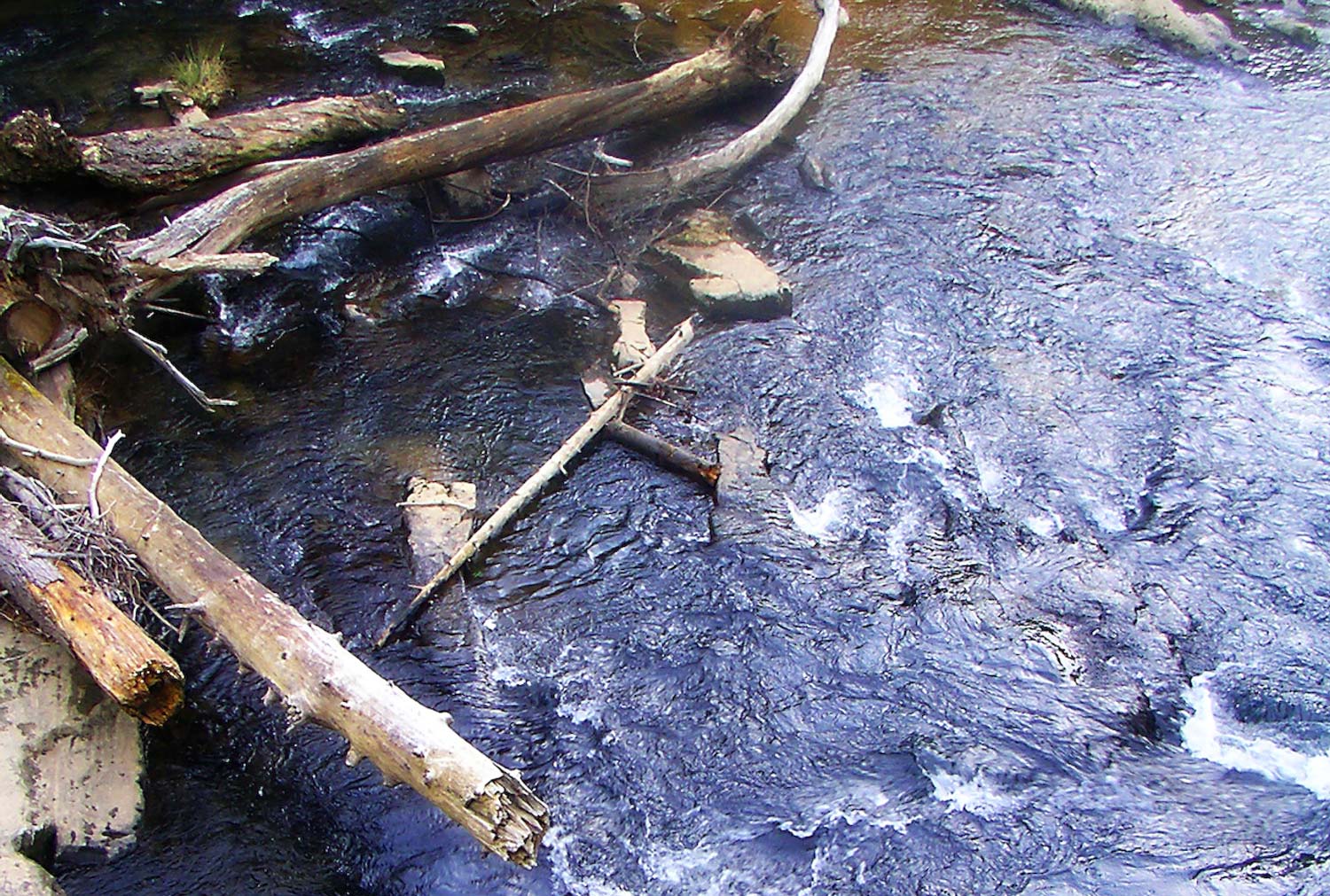
Target Woody structure and catch more fish.
“Wood is good”, shouted Sam Cornelius manning the oars, as I concentrated on drifting my flesh pattern against the never ending medley of wood snags along the Togiak River banks in Alaska, back in 2006. “When ever you see wood, drift your flies as close to it as you can, because fish are usually close by.
Read More »The New and Improved Simms G3 Waders: Video
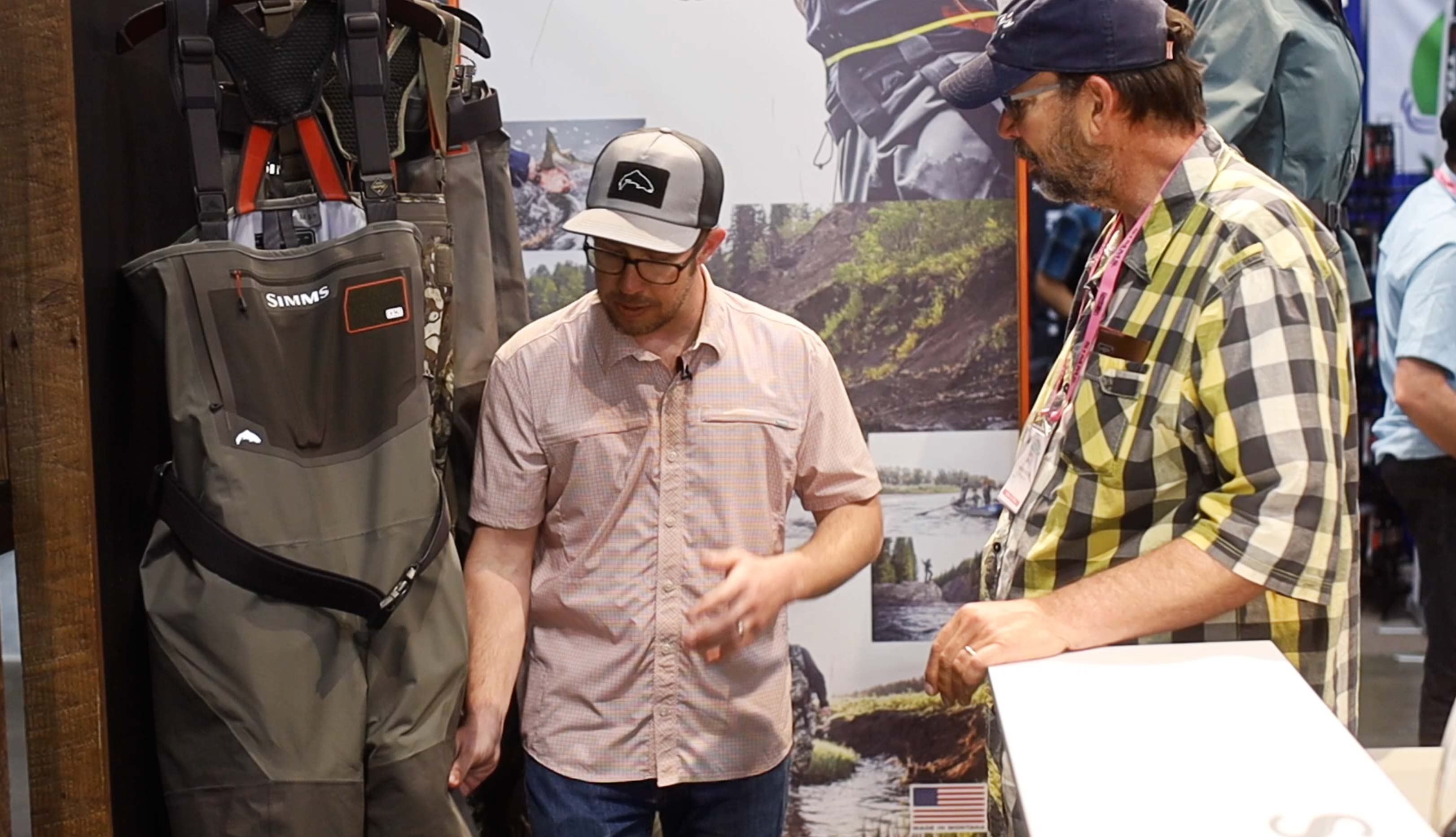
You have to be careful when you update an industry standard like the G3 Wader.
Fortunately, Simms knocked it out of the park. The new G3 waders take quality and design to the next level. I was, frankly, shocked at the look and feel of these waders. Every bit as nice as the G4 waders I have worn for years. If you’ve been putting off updating your waders, now might be the time.
WATCH THE VIDEO TO HEAR ABOUT ALL THE UPGRADES TO THE NEW SIMMS G3 WADERS.
Read More »Choosing the Lens That’s Right You
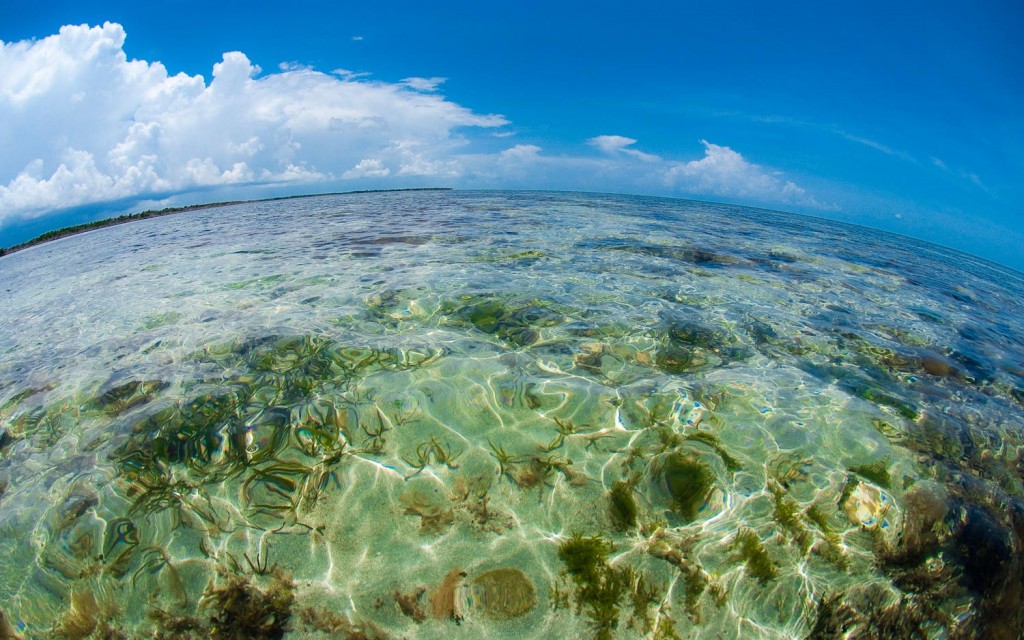
The most common camera question I get from my friends is “what lens should I buy.”
My usual answer is, “the one that costs the most.” It’s a joke, but there is some truth to it. Here are a few tips on choosing a good lens that’s in your budget.
First of all you do get what you pay for and it’s better to save up and buy a good lens than to buy one that you will not be satisfied with and need to replace. Be wary of third party manufacturers. If you have a Nikon camera you are likely better off with a Nikon lens. The term “prosumer” means amateur. These lenses have poor glass and good marketing.
Modern zoom lenses are very good but no one lens can do it all well. Choose a zoom with a modest range like 24-70 not 18-200. Lenses with fast apertures like 1.8 can be wonderful for freezing action but a zoom lens with that kind of aperture will be very expensive. If a fast aperture is important to you you might consider a prime lens like an 85mm f 1.8.
Special purpose lenses like fish eyes are fun but a fish eye is a one trick pony, even if it is a pretty cool trick. A lot of guys see a cool photo taken with a fish eye and run out and buy one. They shoot with it all the time for the first month, then it lives in the bag. If you’ve got the cash, why not, but if your on a budget put that money towards a better quality wide angle.
The other question I get all the time is, “What’s your go to lens for fishing?” Hands down it’s the 12-24 zoom. I like to be close to the action and a wide angle helps with that. It’s great the boat where you can’t
Read More »A Southern Angler in Patagonia
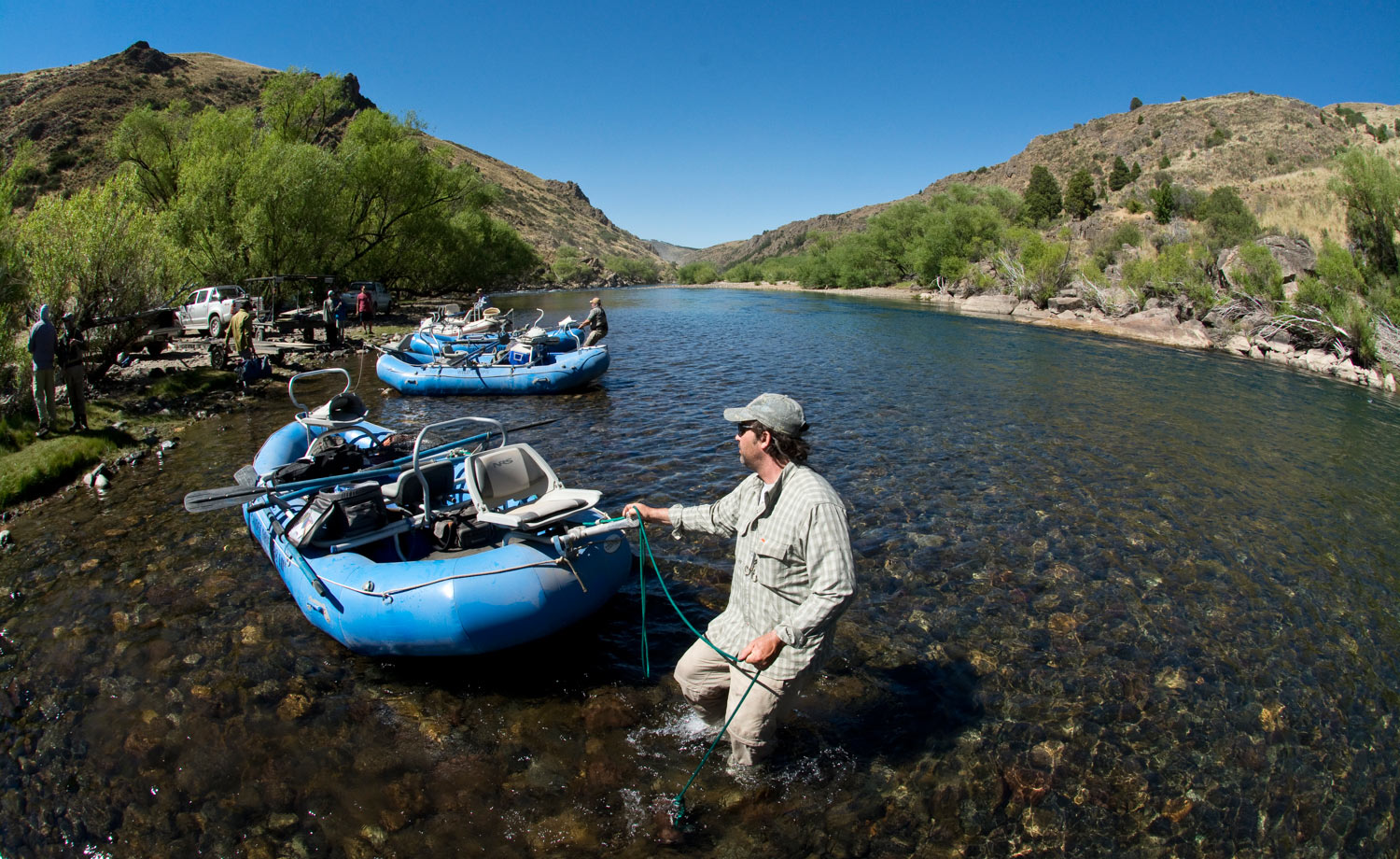
By Kevin Howell
AS THE VOICE OVER THE INTERCOM SAID, “EN PREPARACION PARA EL ATERRIZAJE” (IN PREPARATION FOR LANDING) I STARTED TO GET THAT FEELING IN MY STOMACH.
Was this trip going to be worth the travel and the money, what was the weather going to be like, what if I had a bad guide? After all, the guide said he would meet me at the airport and I had no idea of what he looked like. What if he was like the crazy Panamanian I was stuck with for a week a few years back? What if my Spanish was not good enough to communicate (well I knew that would be a problem)? But the biggest growing question in my stomach was what would the water be like, was it too large for this southern fly angler, would it be muddy, would it be clean and pure, would there be a hatch, if so what kind of strange insects would there be?
As I exited the plane I was whisked into a large room with all the other passengers where all of our bags including our backpacks had to be scanned (Security after getting off the plane? Man, they are tough here, I thought). Turned out it was a checkpoint for entering Patagonia– a region that is so unique and ecologically diverse that you are scanned on entry to ensure that you are not carrying any unprocessed fruits, vegetables, flowers, meats, etc. that could possibly take root in Patagonia. After clearing what seemed to be checkpoint Charlie, I found my guide holding a sign waiting for me. He promptly grabbed my baggage, carefully placed in the truck, handed me a cold water and stated in perfect English that it was only 2 pm and we could be on the water in 30 minutes and there should be a great evening hatch of tan caddis. Whew, what a relief!!
Sure enough, within 30 minutes I was standing beside the Rio Chimehuin–a stream about the size of the Watauga River–stringing a 5 weight Sage in preparation for the afternoon’s fishing. As Gustavo slid the raft into the river, I rigged a size 12 Elk Hair Caddis per his instructions with a prince nymph dropper. I landed nearly 30 trout that afternoon, switching periodically between the Caddis and a size 8 Hooper. As we left the river, I was thinking, man what else could you ask for? I was the only angler on the river, the fishing was awesome, the guide was fabulous and floating the Chimehuin was just like the rivers at home. Except that the Rhododendron had been replaced by willows beyond which lie nothing but rock and volcanic ash and scattered sage bushes.
Upon arriving at the lodge I was treated to a feast that could have easily feed a family. I could only imagine what tomorrow would bring as Gustavo had told me we were going to wade fish the Rio Malleo upstream from the Yellow Bridge and the fishing would be better than it was today. He told me that Coye would be by in the morning to see that I was awake and had breakfast and he would pick me up at 8 to head to the river. I awoke the next morning at 6:30 to the smell of fresh coffee and bacon cooking.
Almost like clockwork, Gustavo arrived, loaded all of my gear in the truck while I was finishing breakfast before I even had a chance to try and help. Arriving at the Malleo, I was blown away by
Read More »Fly Fishing: Being Outfitted Properly Should Always Be the #1 Priority
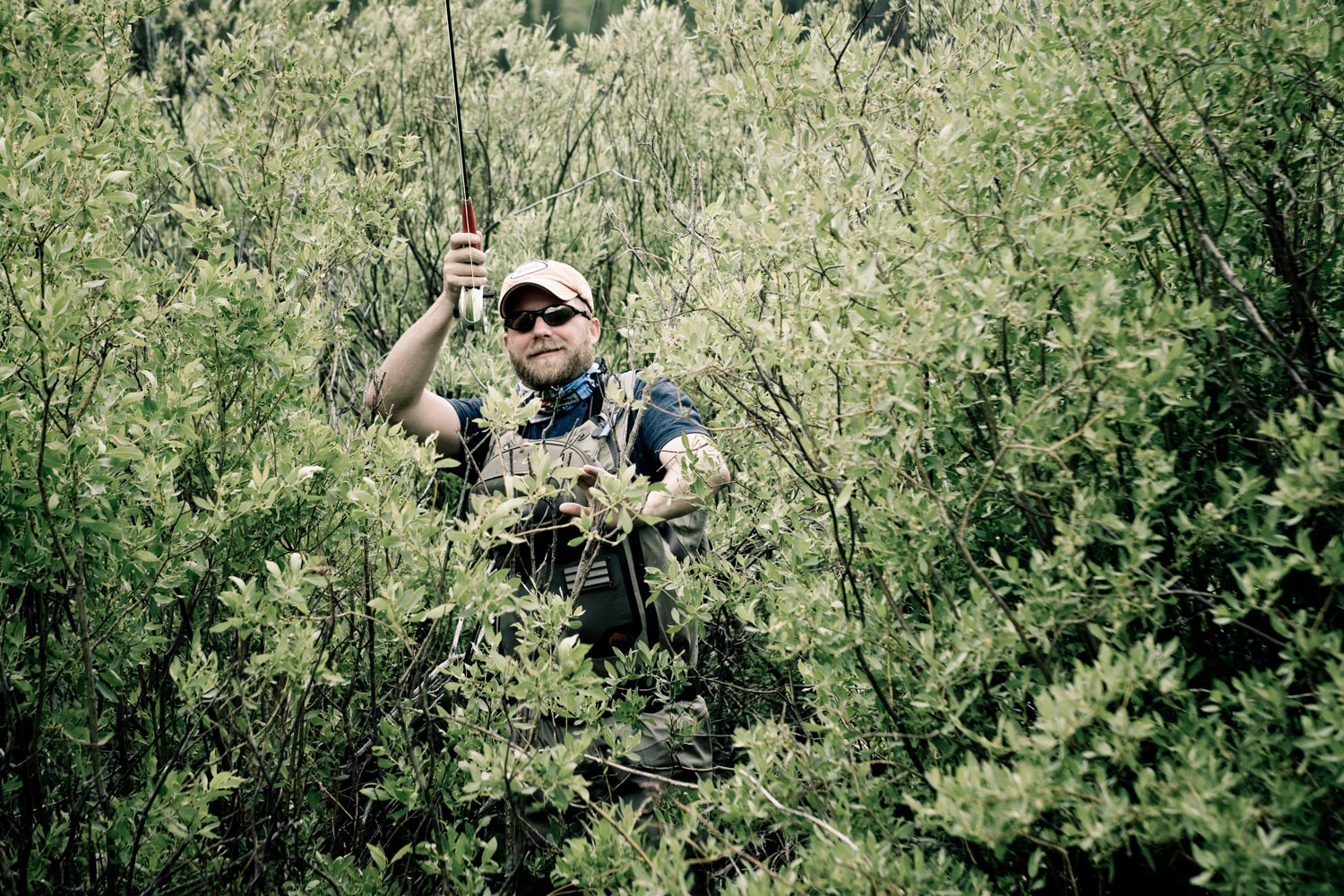
MANY CAN ATTEST TO THE FEELING OF PURE EXCITEMENT THAT COMES OVER US RIGHT AFTER WE’VE PARKED THE VEHICLE AND ARE FIXING TO HIT THE WATER FOR A GREAT DAY OF FLY FISHING.
It’s an awesome feeling, one quite frankly, that I never get tired of, because it opens the door for each of us to experience true freedom, solitude and adventure. And there’s nothing like the anticipation of not knowing how the day is going to play out for us. This feeling has gotten me into trouble many times over the years, and I’m sure that I’m not alone. Look back on some of your past trips and I bet you’ve had a time or two where you got in way too much of a hurry, and forgot to pack critical gear. We tell ourselves, “the sky is blue and there’s not a cloud in the sky. I don’t need to bring my rain jacket”. We leave that granola bar or bottle of water in the truck because we hit a food joint on the way into the river and sucked down a 20 ounce bottle of water. Sometimes, we get lucky and we don’t wind up needed the stuff we’ve left behind. Unfortunately, if you get in the habit of doing this too much, eventually it’s going to bite you in the butt. It happened to me on a recent wade fishing trip with Louis in WY.
I was chomping at the bit to get on the water. It had been two years since I’d made a trip out west fly fishing. My late flight into Jackson had got us off to a late start. Since fishing time was limited I decided to do something I never do, which was slap on my waders and hit the water in just a light weight t-shirt. I didn’t second guess myself since Louis told me that we’d only hit this one spot upstream, and then we’d head back to the truck and drive further up river. I took a few seconds to
Read More »Some Days It’s All About the Twitch
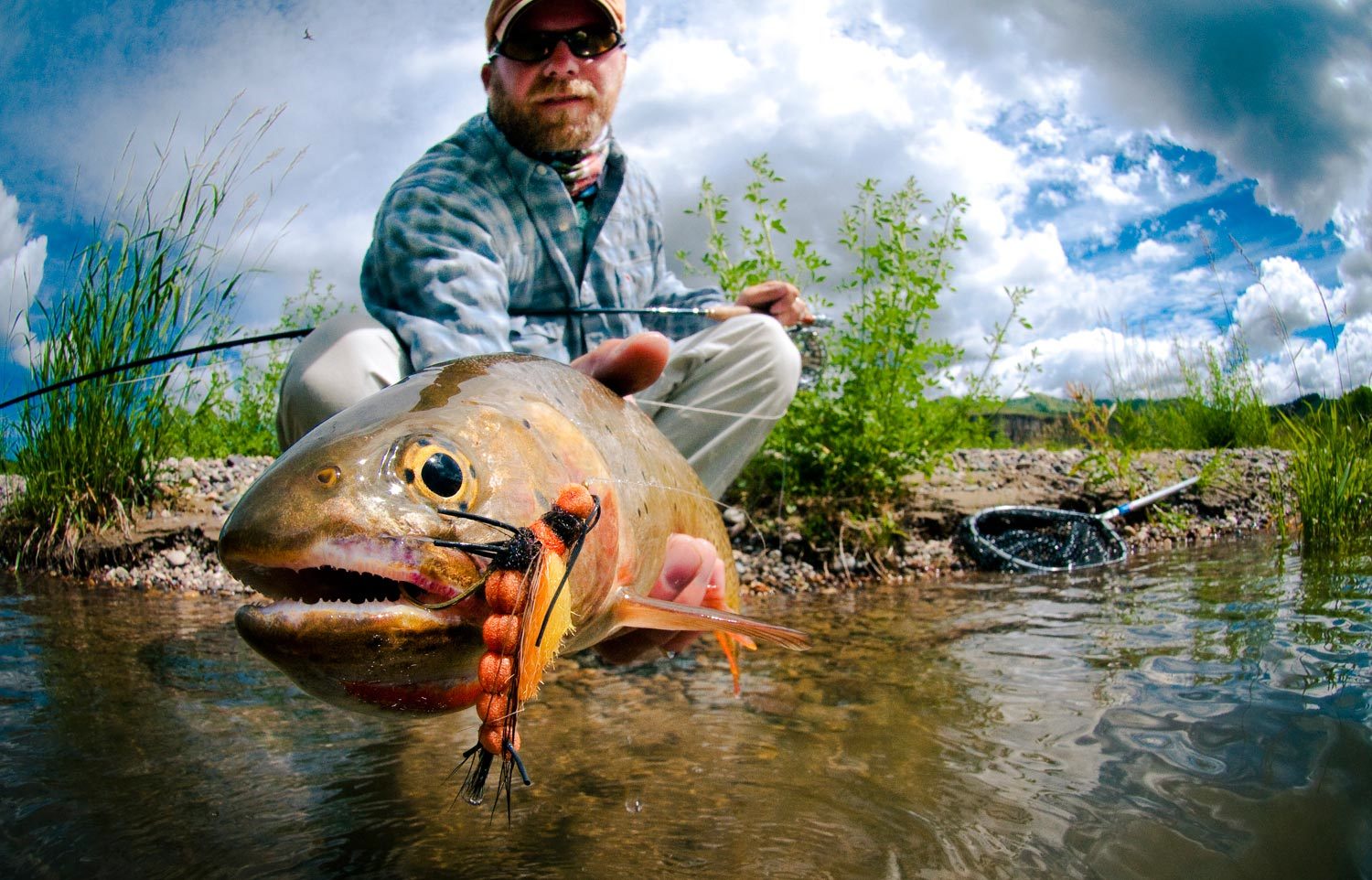
Some days trout need more than just a well placed fly in their field of vision and a drag-free drift to persuade them to eat.
When you’re working water that you’re certain holds trout, and a standard drag-free drift isn’t getting the job done, try imparting subtle movement on your fly/flies to trigger bites. The best way to execute this is by using well timed rod tip twitches, during the drift, when your fly is moving through high percentage trout holding water. Done properly, it will give your fly that extra “alive and life-like appeal” and that often will give trout the green light that your fly is a natural and not an impostor.
Last week, I had the honor of fly fishing with Rob Parkins (WY & ID veteran guide) and Zack Dalton (Farbanks Sales Manager) on the South Fork of the Snake River during an epic salmonfly hatch.
Read More »Better Bow and Arrow Cast: Video
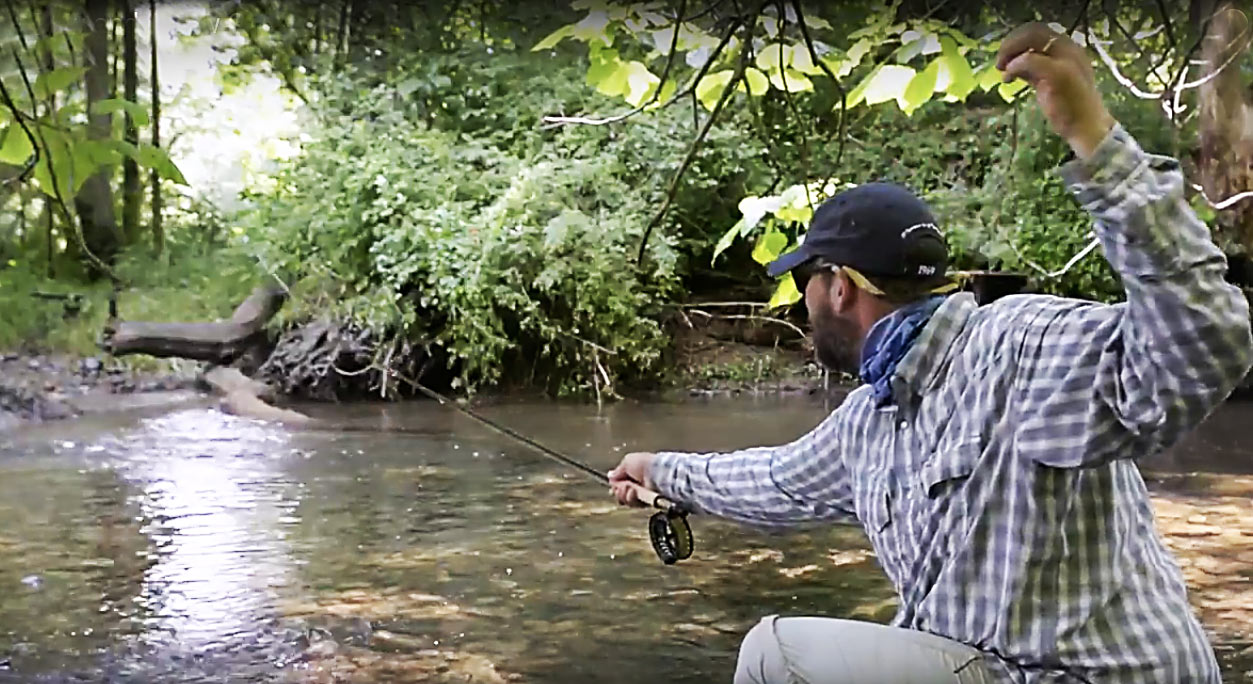
By Louis Cahill
Here’s a trick you may not know for making longer Bow-and-Arrow casts.
If you love fishing small streams, then you probably know how to make a Bow-and-Arrow cast. It’s not rocket science. But, what if I told you I could show you how to get an extra 6-9 feet with that simple cast?
I couldn’t count the number of brook trout I’ve caught this way ing the mountains of North Georgia and North Carolina. If you don’t know how to make the Bow-and-Arrow cast, or if you’re interested in reaching more water,
check out this video.
Read More »New Orvis Fly Rods and Reels for 2022
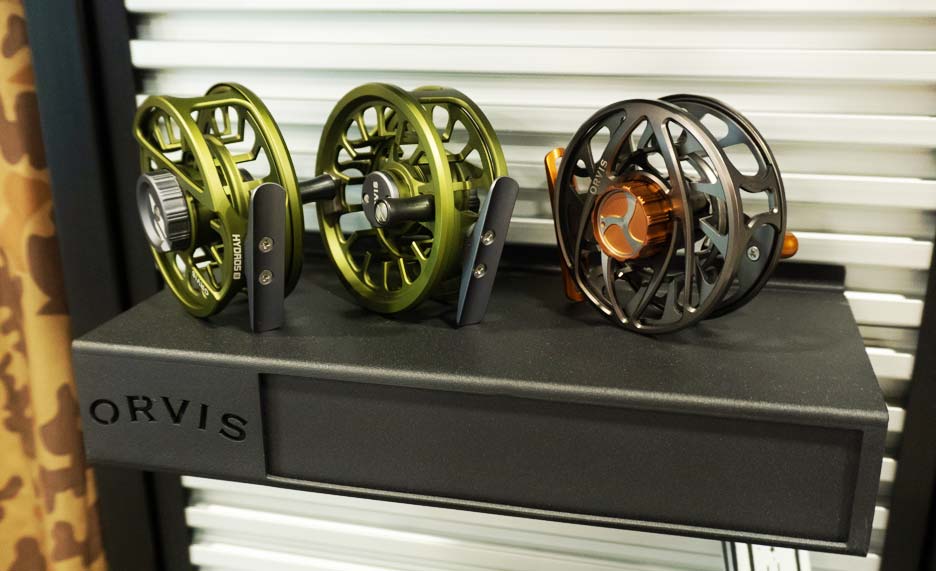
Orvis has a whole bunch of new fly fishing gear for 2022. It was so cool to be back at the IFTD show this year and reconnect with everyone. A lot of manufacturers did not have new offerings this year, but those who did had some very cool stuff. Orvis had an impressive new lineup of gear in every category. I caught up with Shawn Combe to see whats new in fly rods and reels. Watch the video to see all the new fly rods and reels from Orvis in 2022. Louis Cahill Gink & Gasoline www.ginkandgasoline.com hookups@ginkandgasoline.com Sign Up For Our Weekly Newsletter!
Read More »Buying A Fly Rod For The Young Beginner
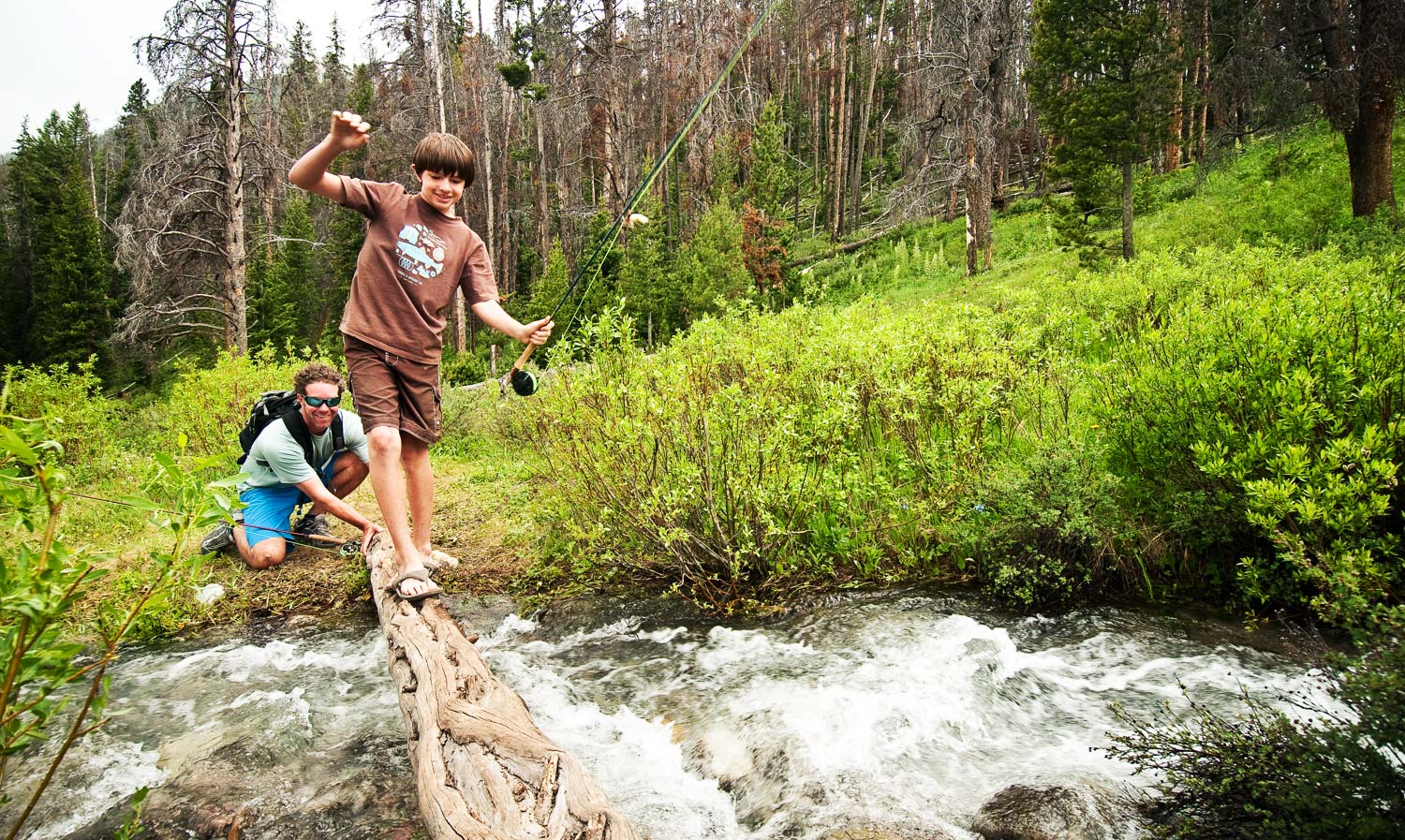
By Justin Pickett
Bicycles, Red Ryders, footballs, and Barbie dolls.
These are among the many things that get scribbled onto Christmas lists this time of year in hopes of finding them beneath the tree on the 25th morning of December. Easy enough. A trip to the local department or sporting goods store can handle those requests.
But what about when a fly rod makes the list? Or maybe it didn’t, and you are just a super awesome parent that wants to introduce their kid to fly fishing?!
My first fly rod was a Christmas gift from my parents. It was a Scientific Anglers starter kit that I had seen in a Bass Pro magazine. I didn’t have a fly shop close by, and the internet was in its infancy, so finding options and checking things out first-hand just wasn’t an option. I remember showing it to my parents and just jotting it down at the top of my wish list. I knew nothing about what I wanted, or needed, and neither did my parents. I just wanted something, anything, to get me started… and then to figure out what the heck tippet was???
Luckily for today’s kiddos, things aren’t quite as vague. A quick internet search can pull up a handful of options for the beginning angler interested in getting their feet wet. Whether you’re looking for a first rod for your little tike, or maybe the next teenage protige, several companies have you covered for just about every fly fishing scenario. You won’t find many bells or whistles on these rigs, but as an initial investment into fly fishing, these kits are perfect for getting a young angler on the water without breaking the bank.
So, if a fly rod has found its way onto a Christmas list in your family, make sure you give these kits a look-see!
Echo Gecko
With a modest, forgiving action and kid/hippy-friendly cosmetics, the Gecko is ready for action. Featuring a small lower grip for two-handed casting, the Gecko can be fished with one or two hands. With a comfy EVA grip and Echo’s lifetime warranty, the Gecko will keep your kid fishing through the learning curve.
Redington Minnow
Read More »